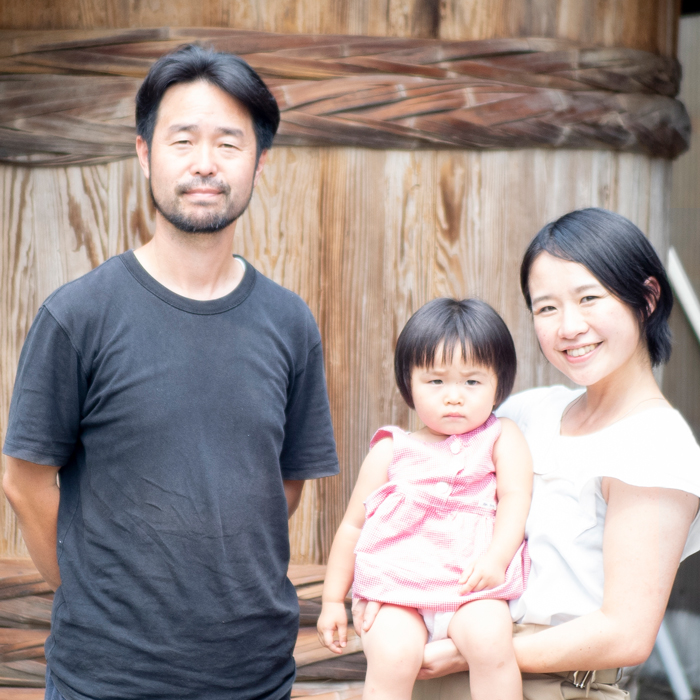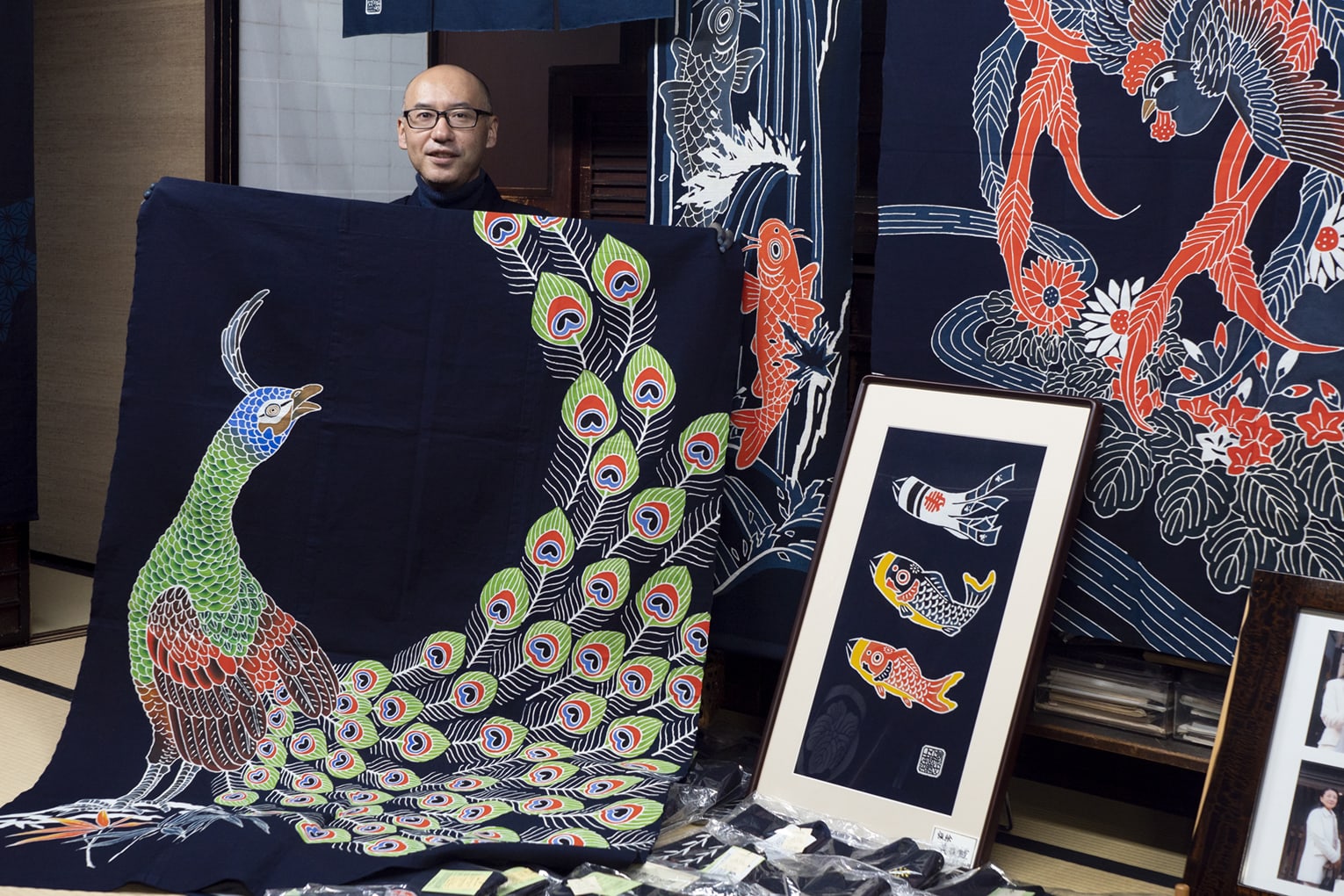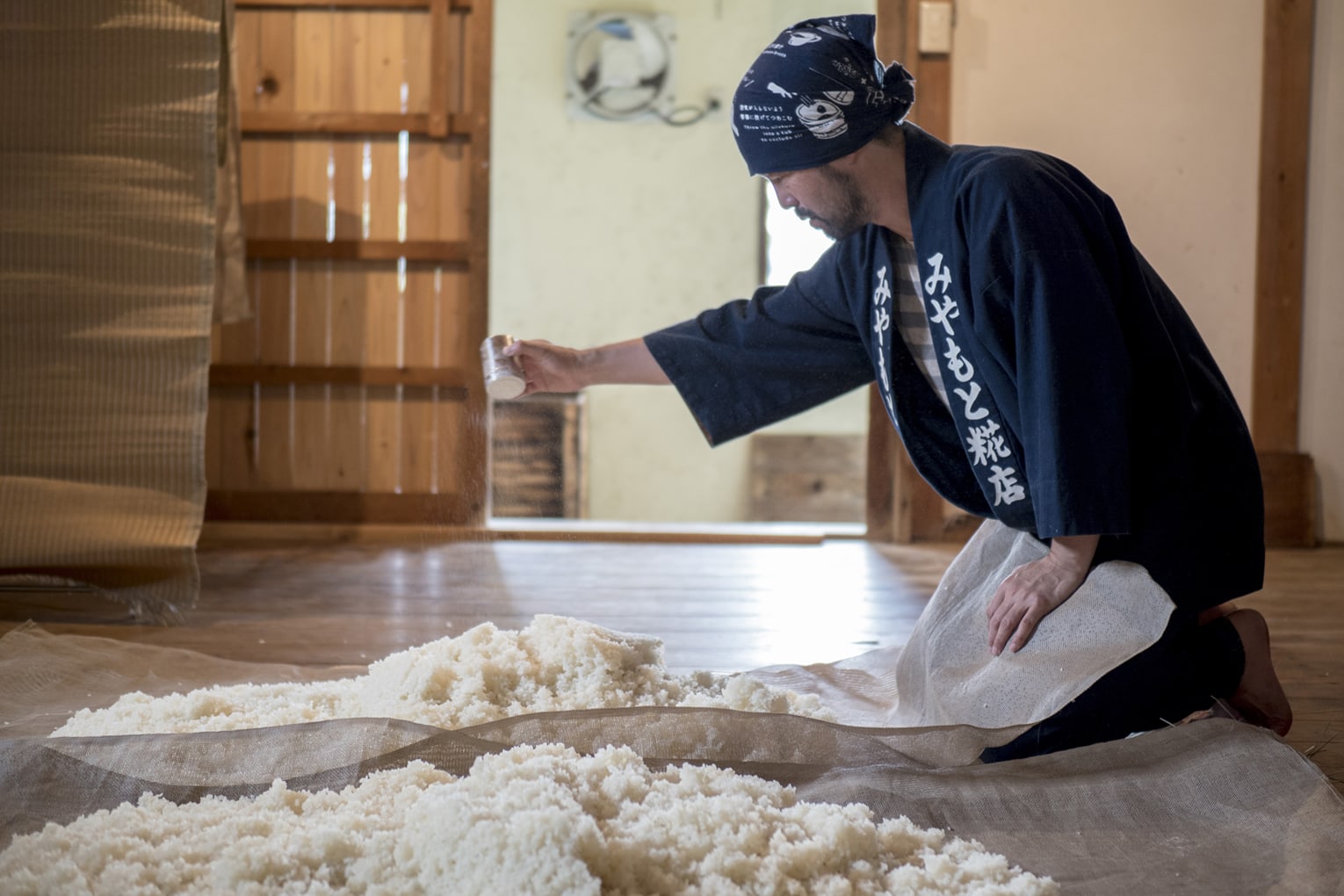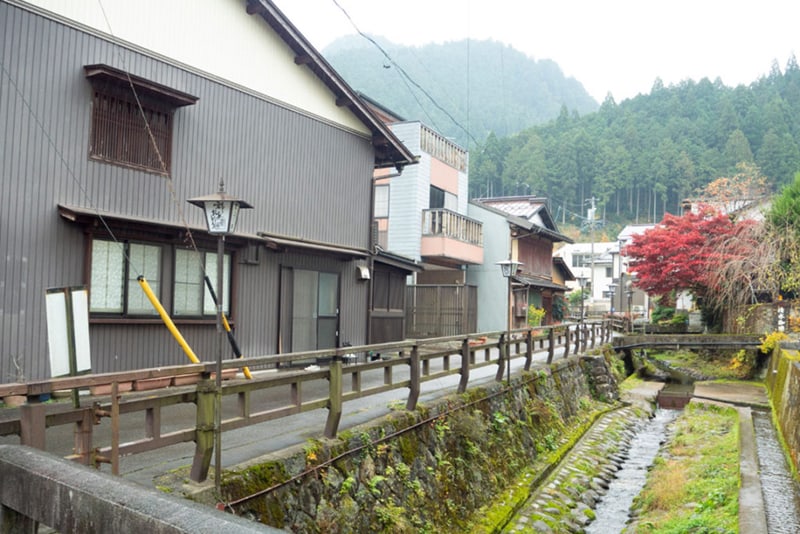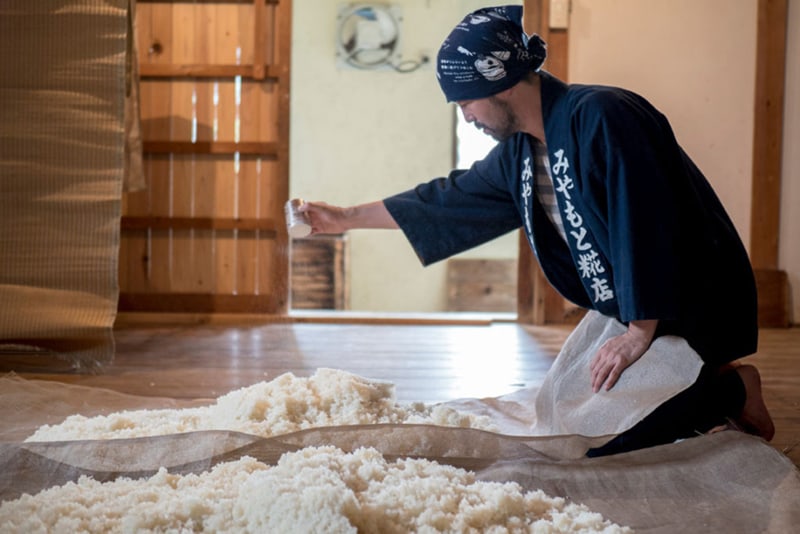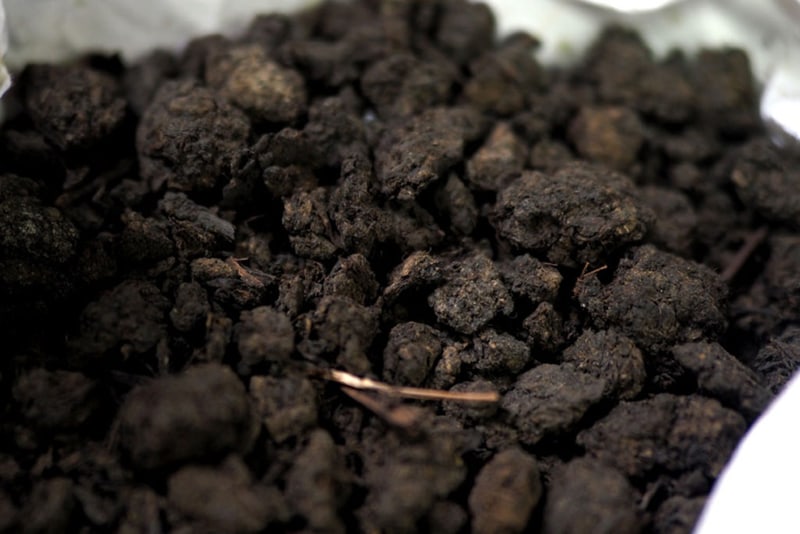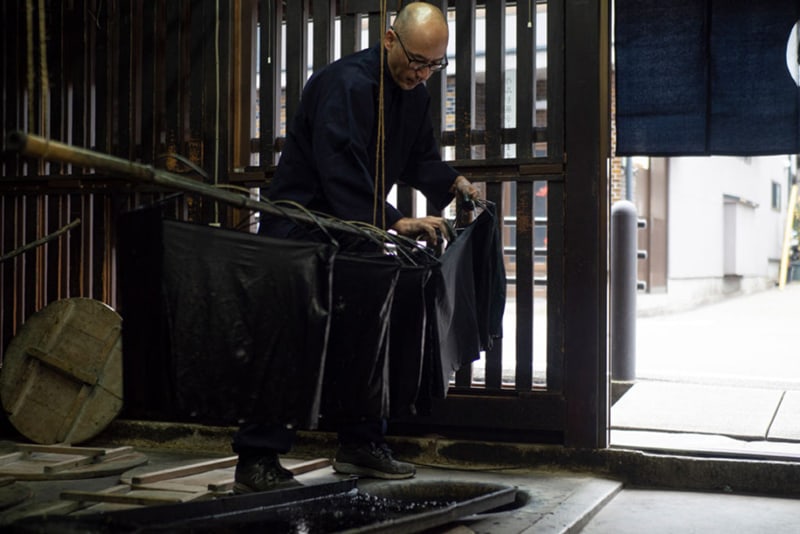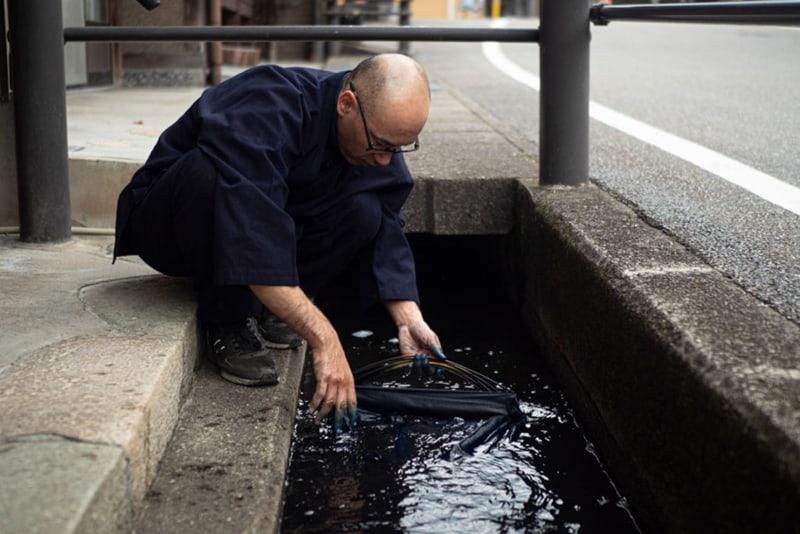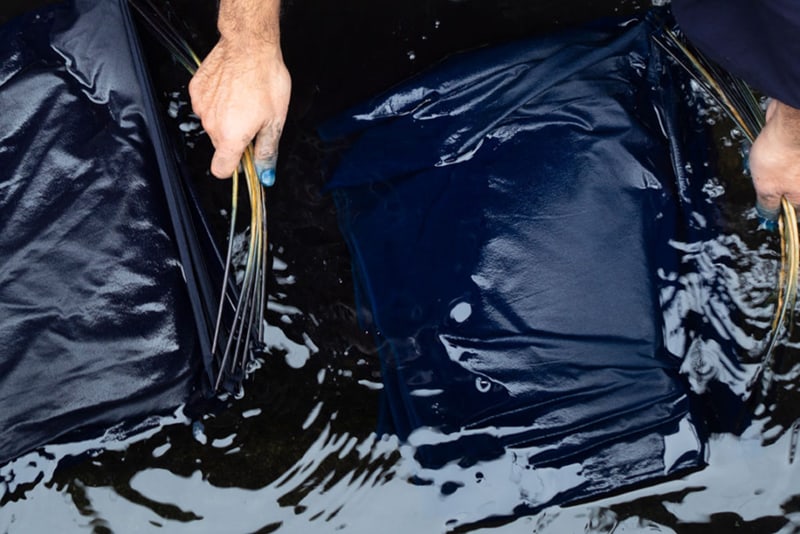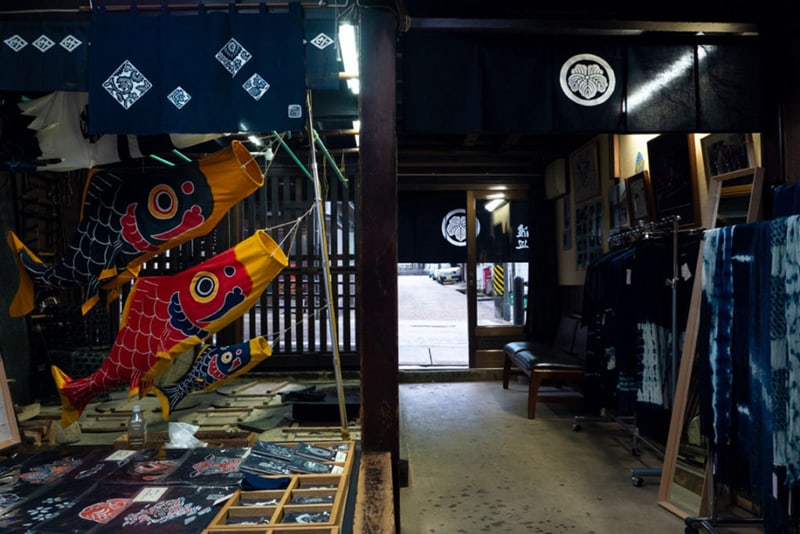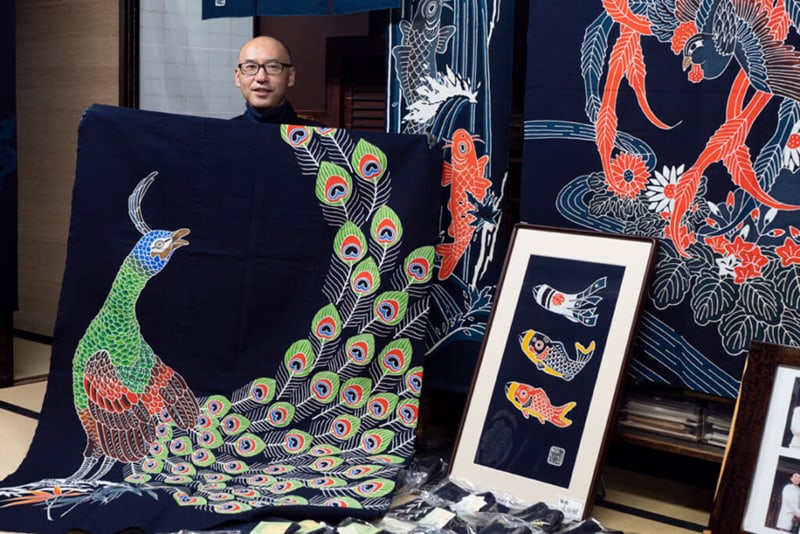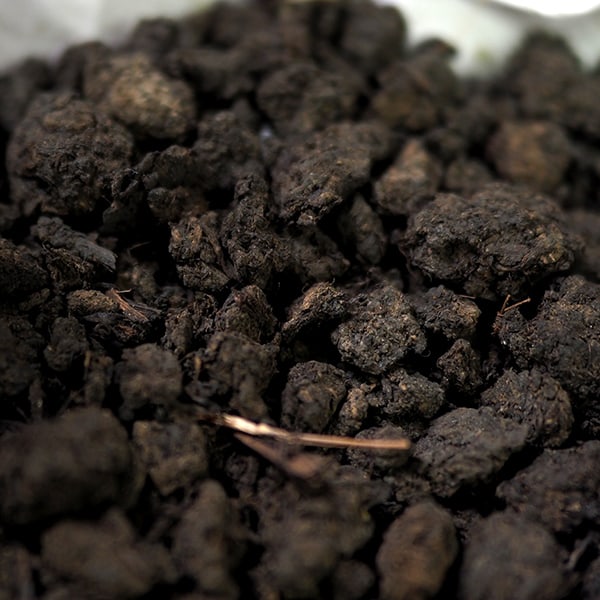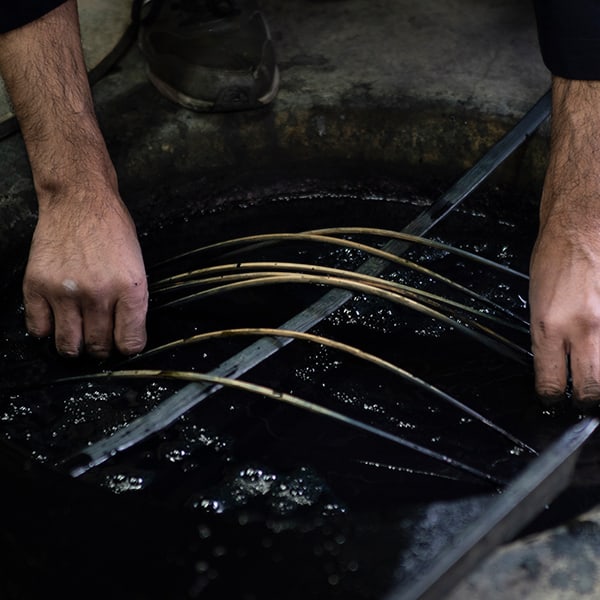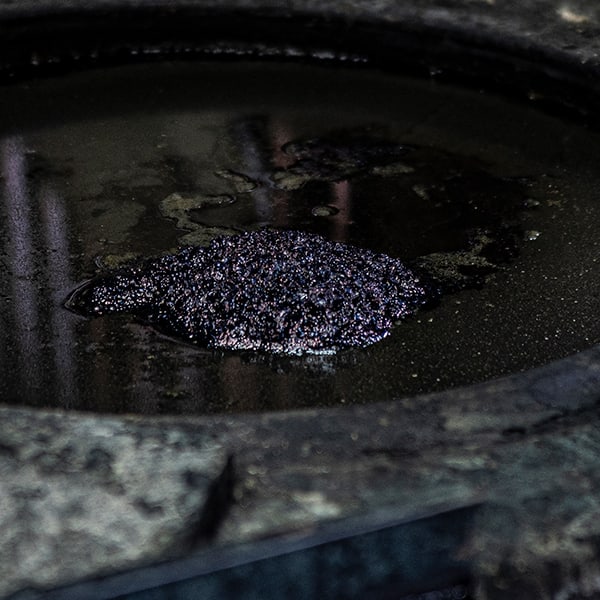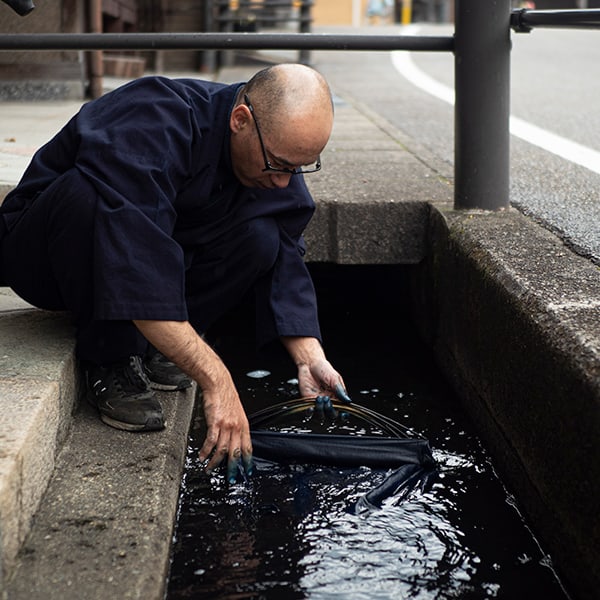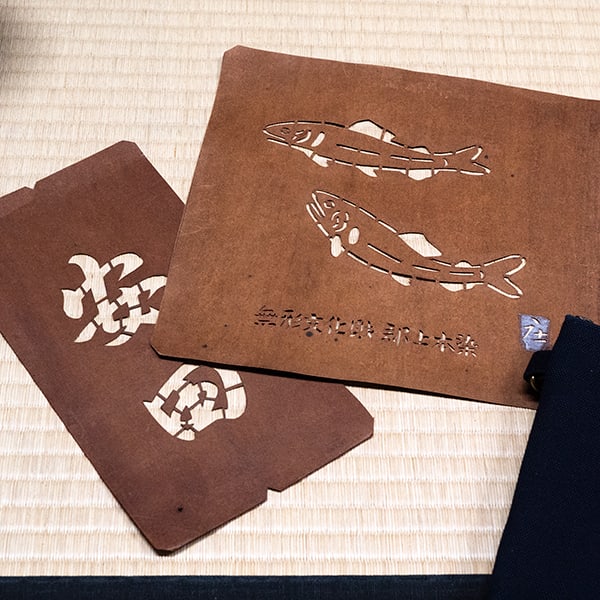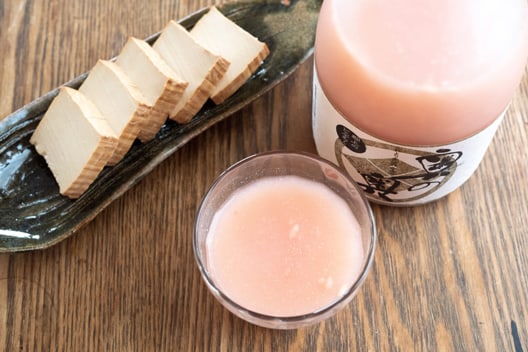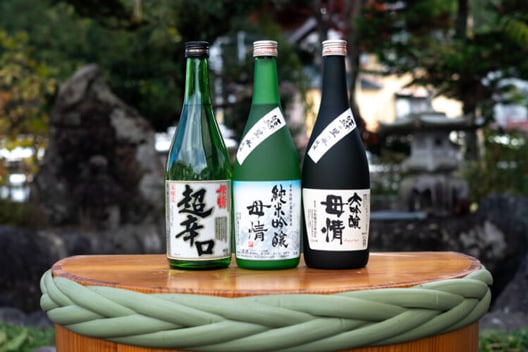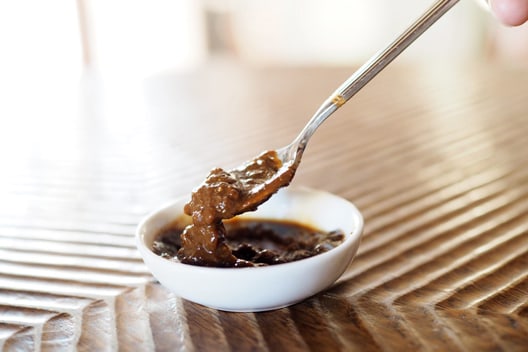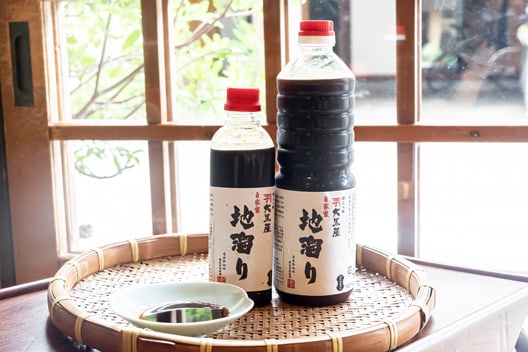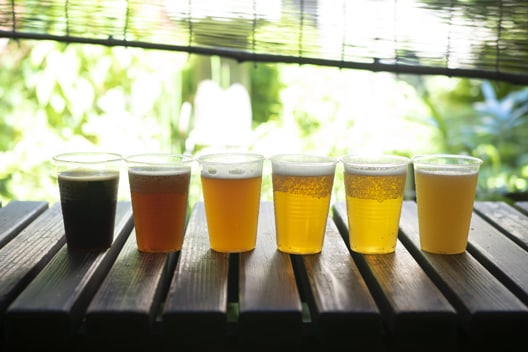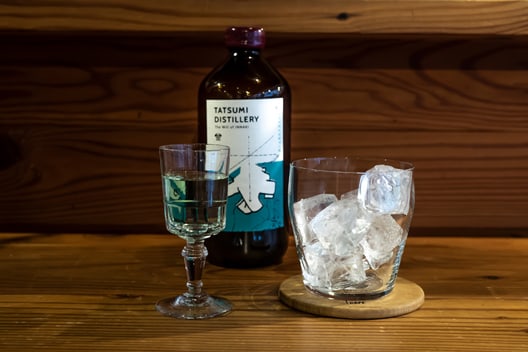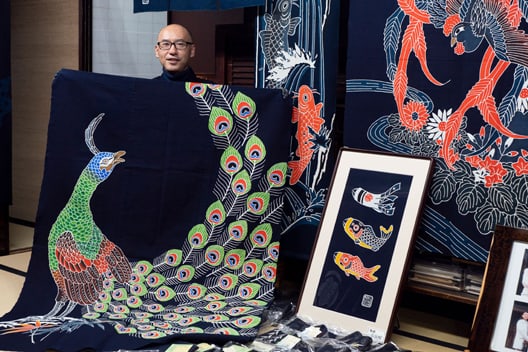The castle town near Gujo Hachiman Castle has the history of 400 years. The waterway, maintained because of the establishment of this castle town, is flowing along the streets.
When I walk along and listen to the murmur of a stream, I see “Watanabe Indigo Dyehouse” with an indigo dye shop curtain.
The reason we planned to visit here is the Hanten (Short coat) in the picture that we bought from “Watanabe Indigo Dyehouse”. My husband usually wears this hanten when he is working. Many koji shops have long history, he is quite rare that he is the first generation. He is a rough person that everyone knows. Hanten from Watanabe Indigo Dyehouse makes him look commanding. When you put it on, you will immediately be surrounded by the magic of this smart indigo blue, seems like a dignified owner doing for generations.
Few people know that indigo dye is actually a kind of fermentation! People soak and ferment the leaves of the indigo plant in water to make a dye called “Sukumo” and do fermentation again to make a dyeing solution. Because when the fermentation goes weaker, the color will become lighter. Once you soak in the solution, you need to keep for 3 days and let the microorganism do the fermentation. This is how traditional indigo dye works.


